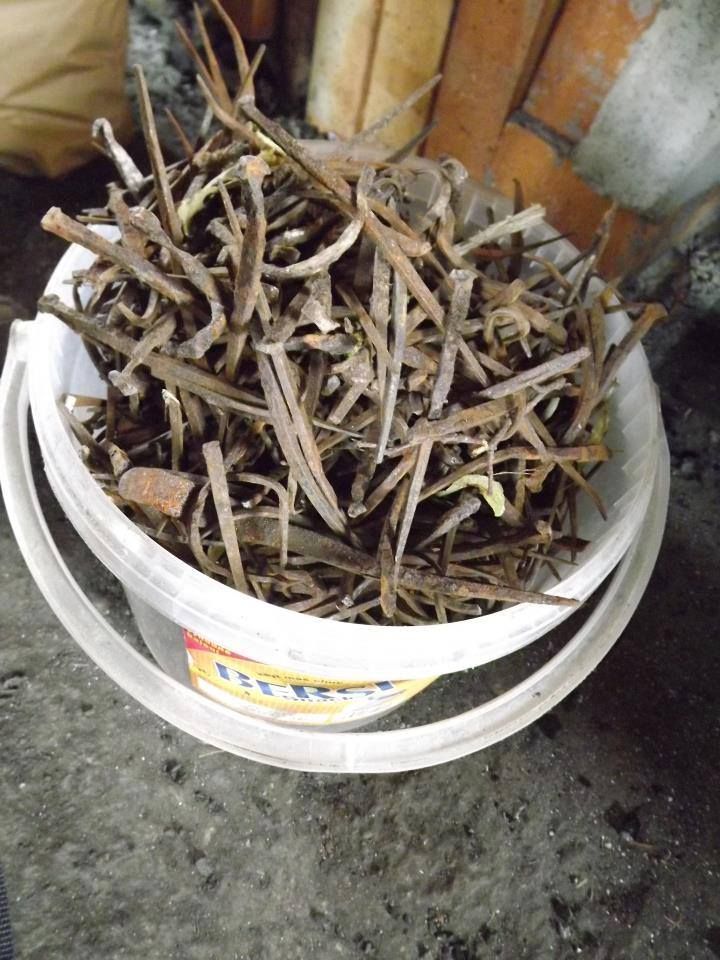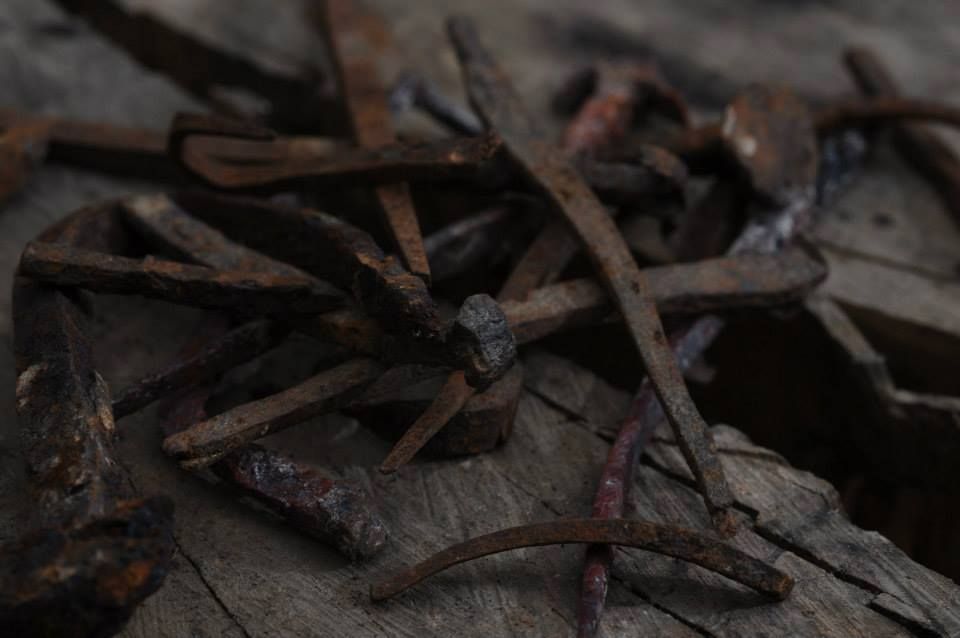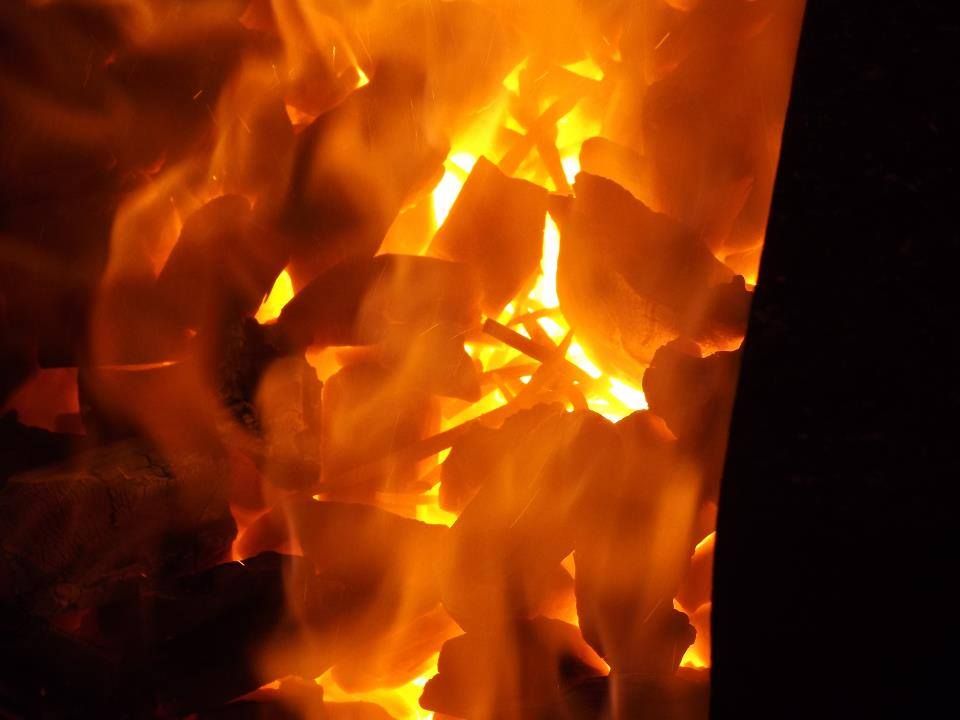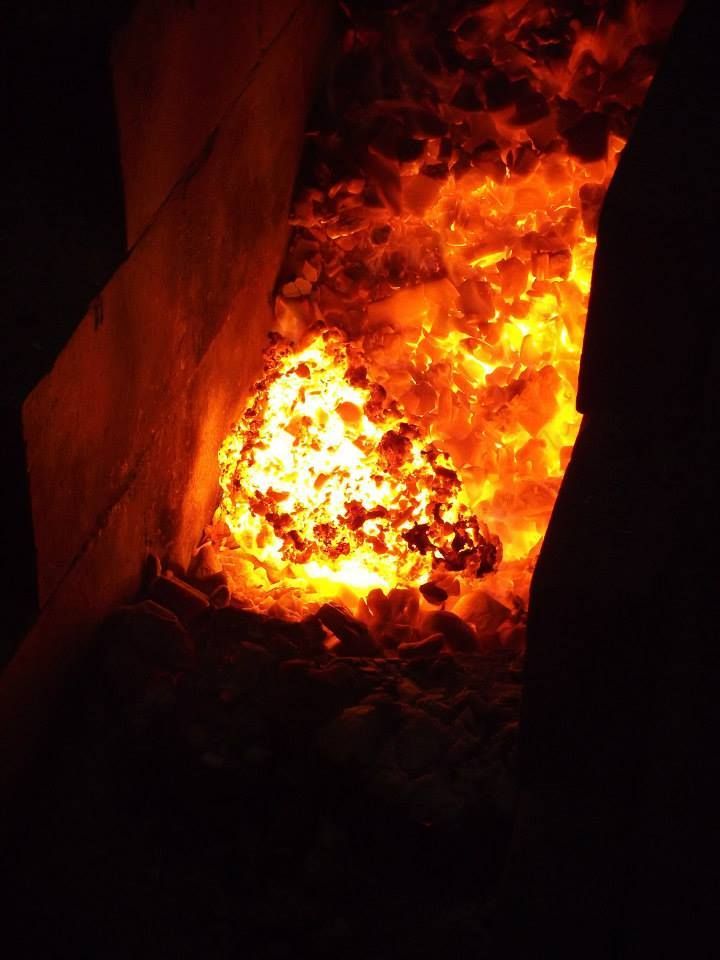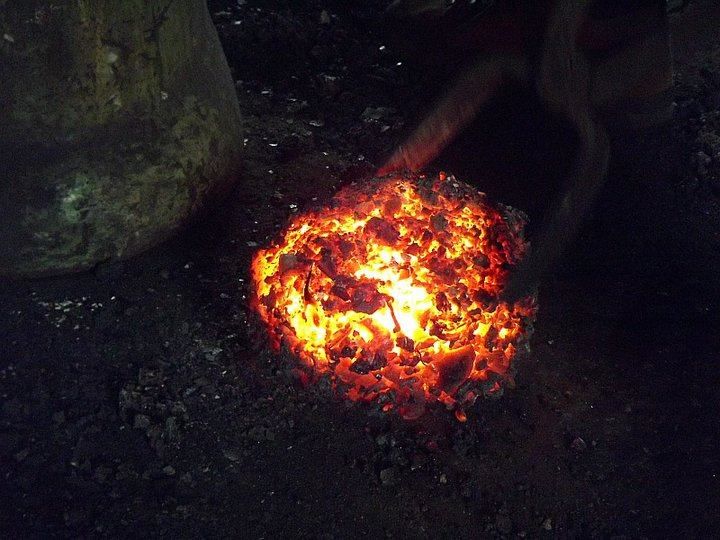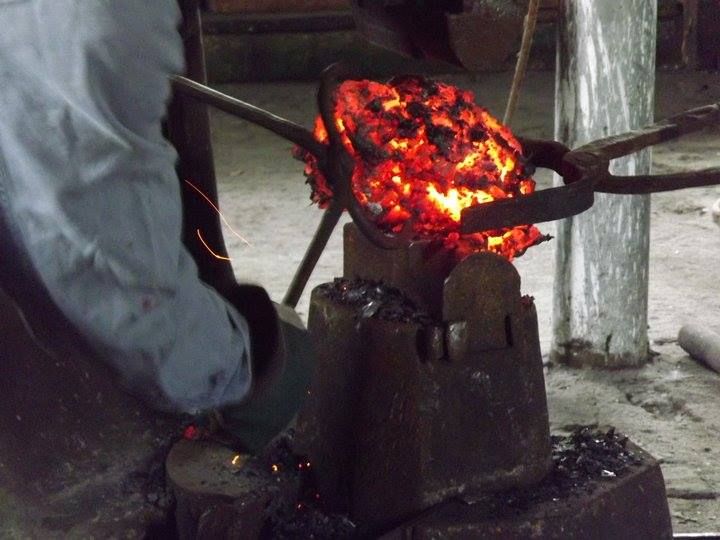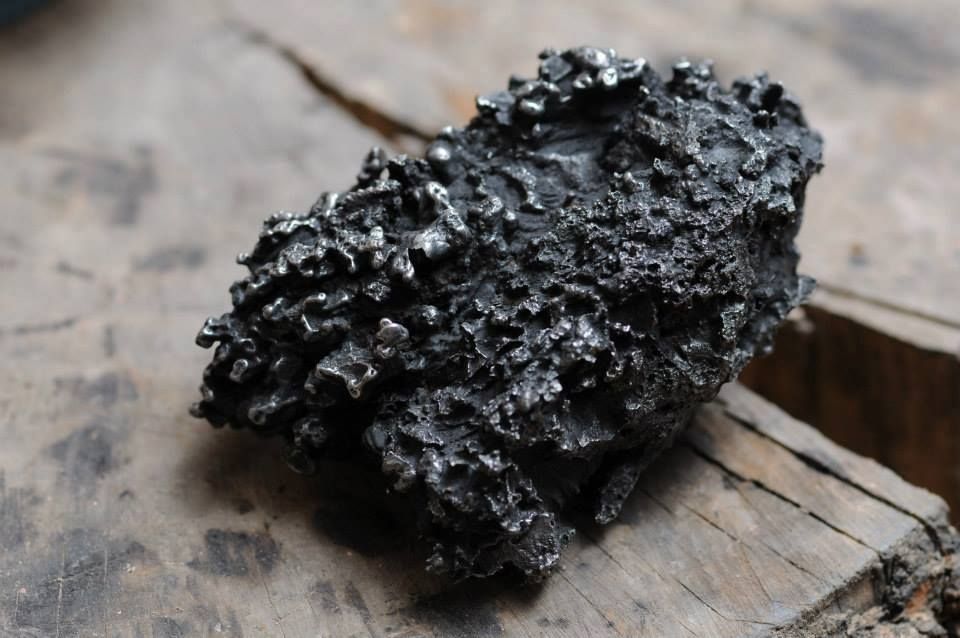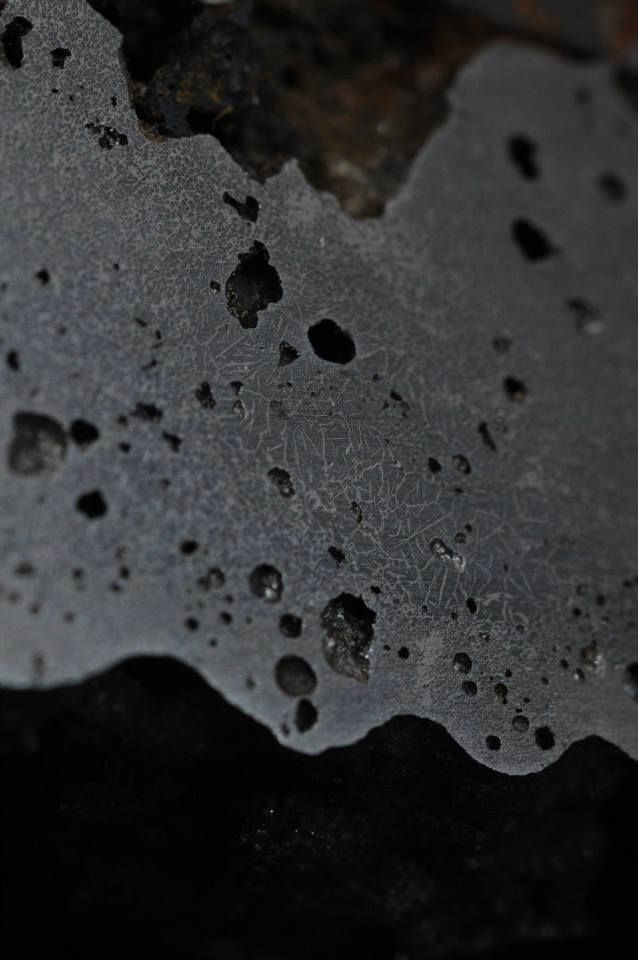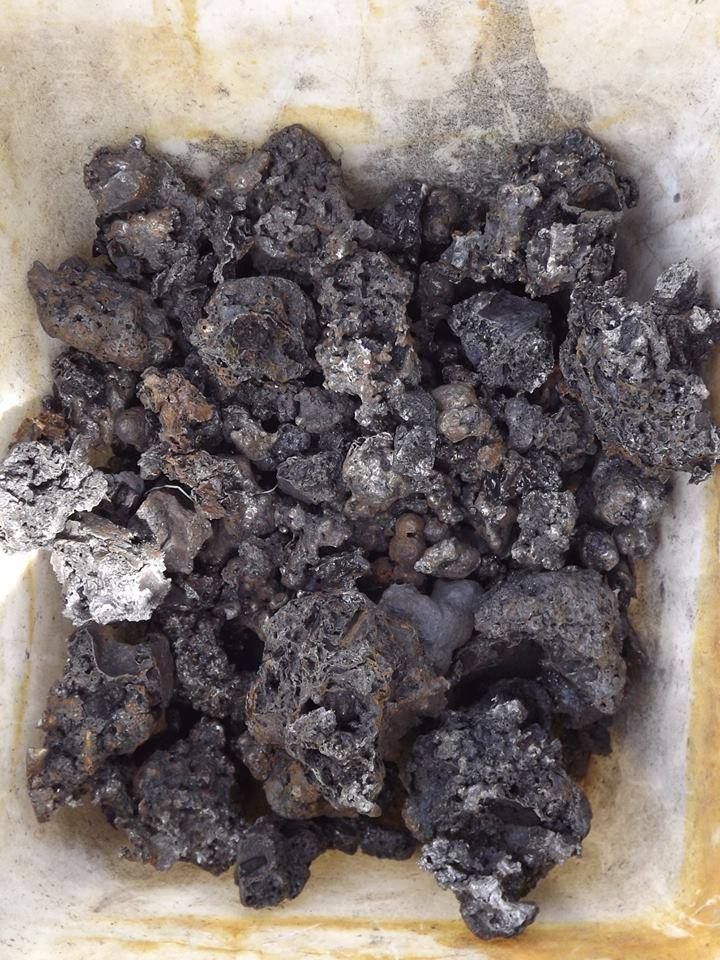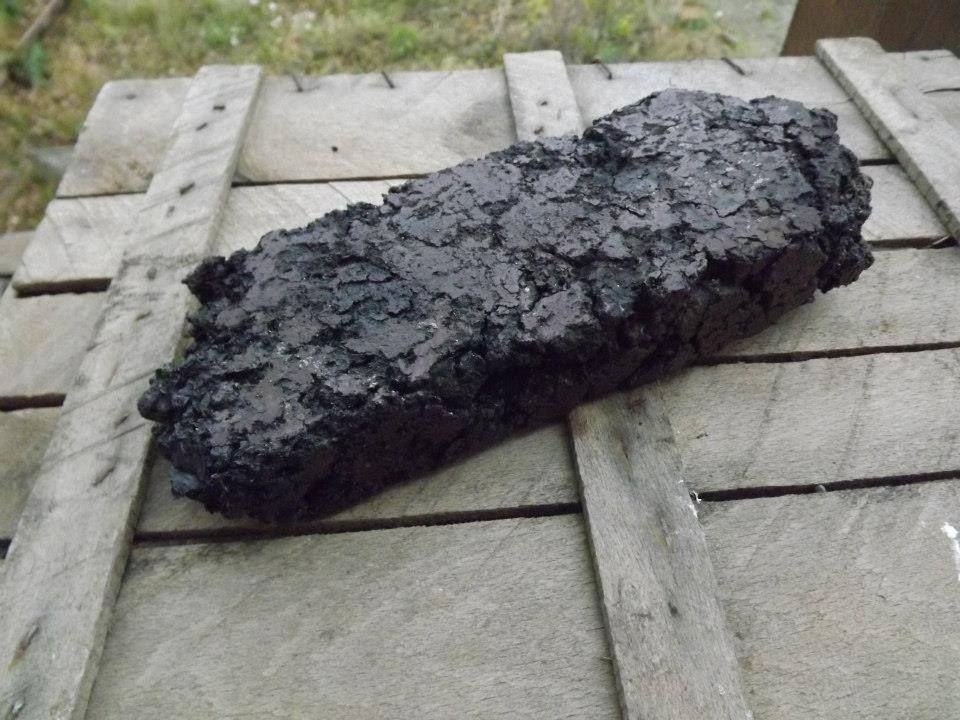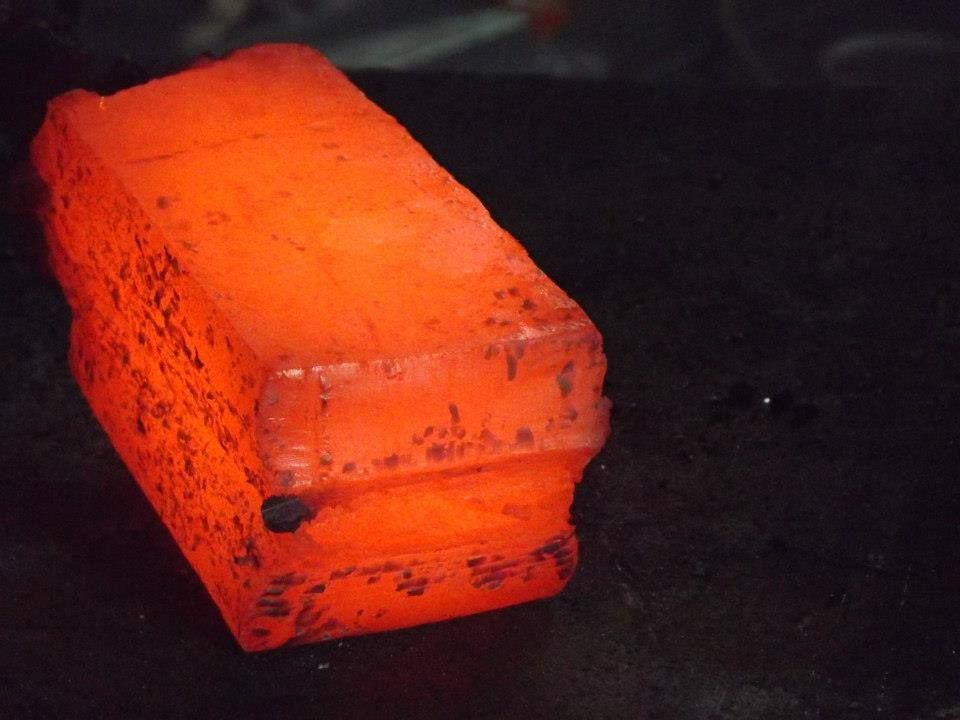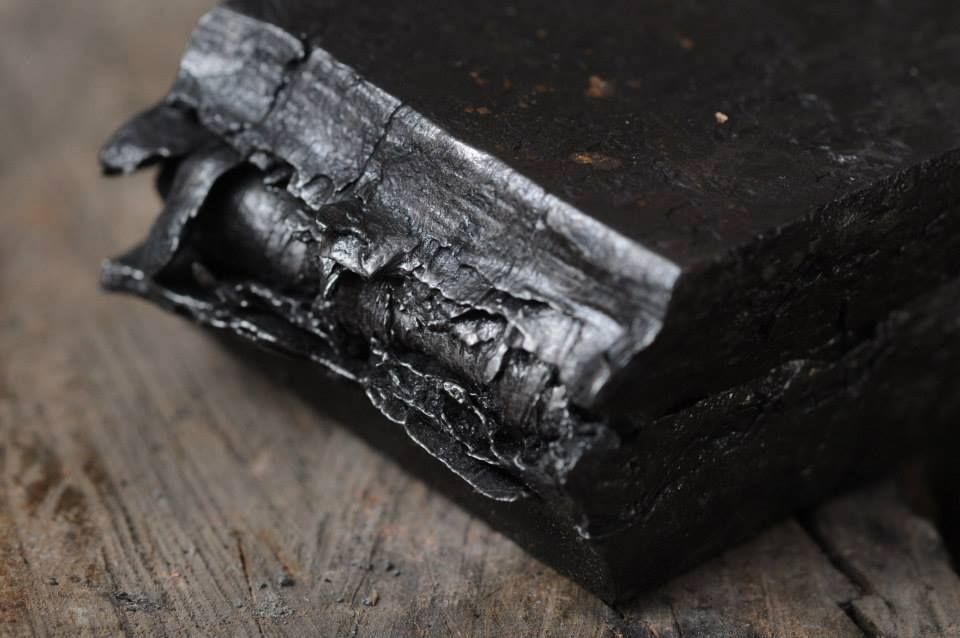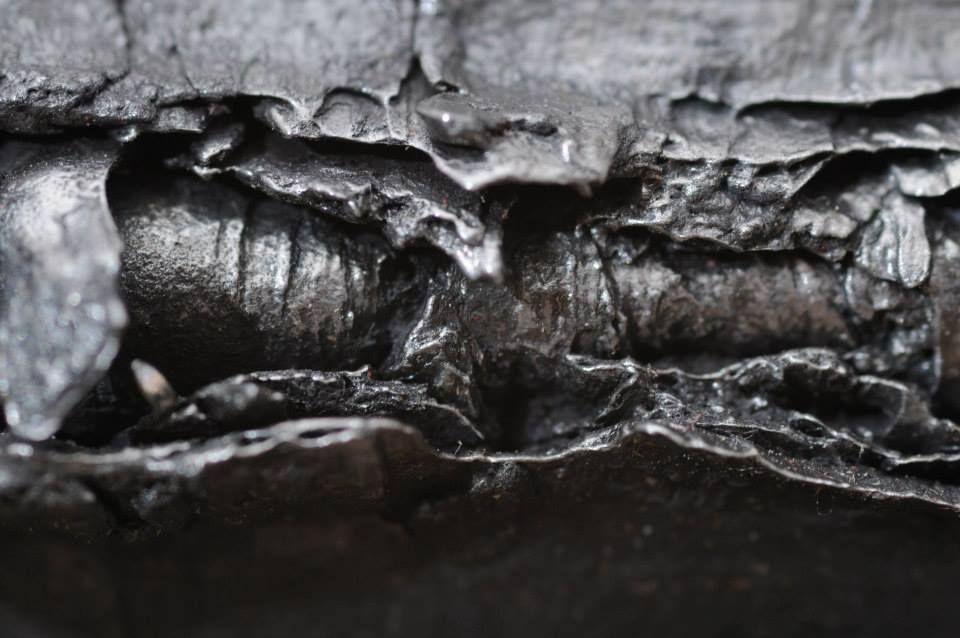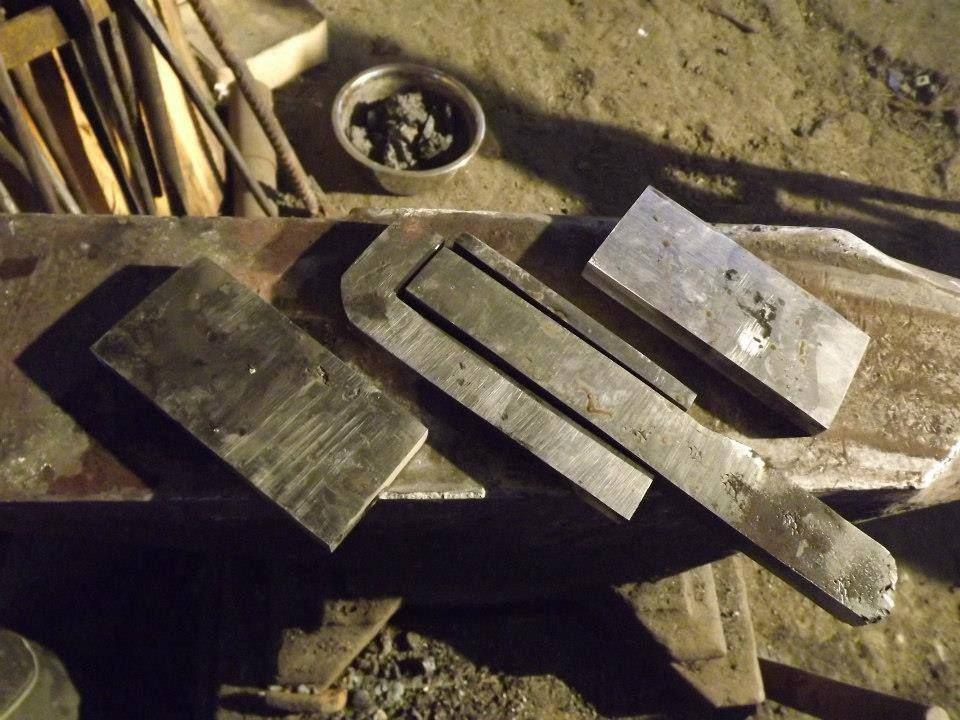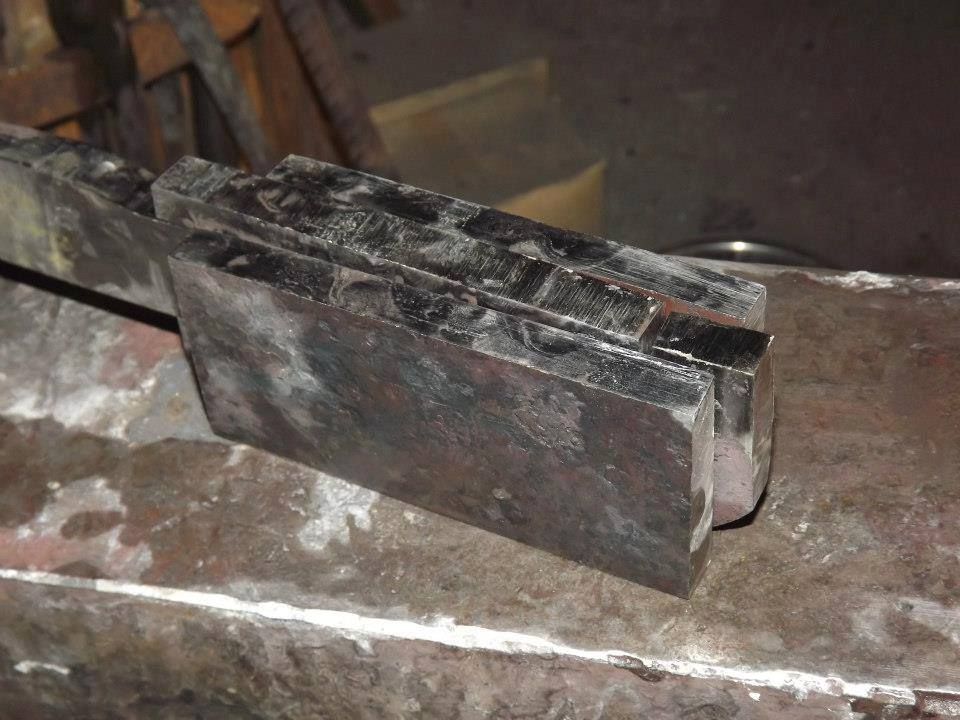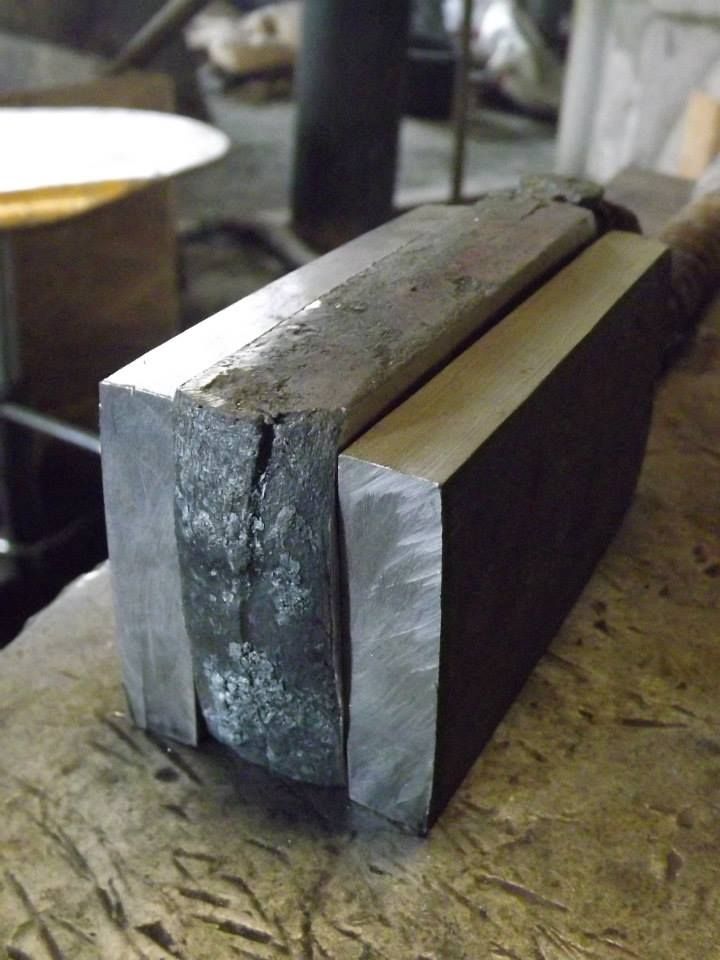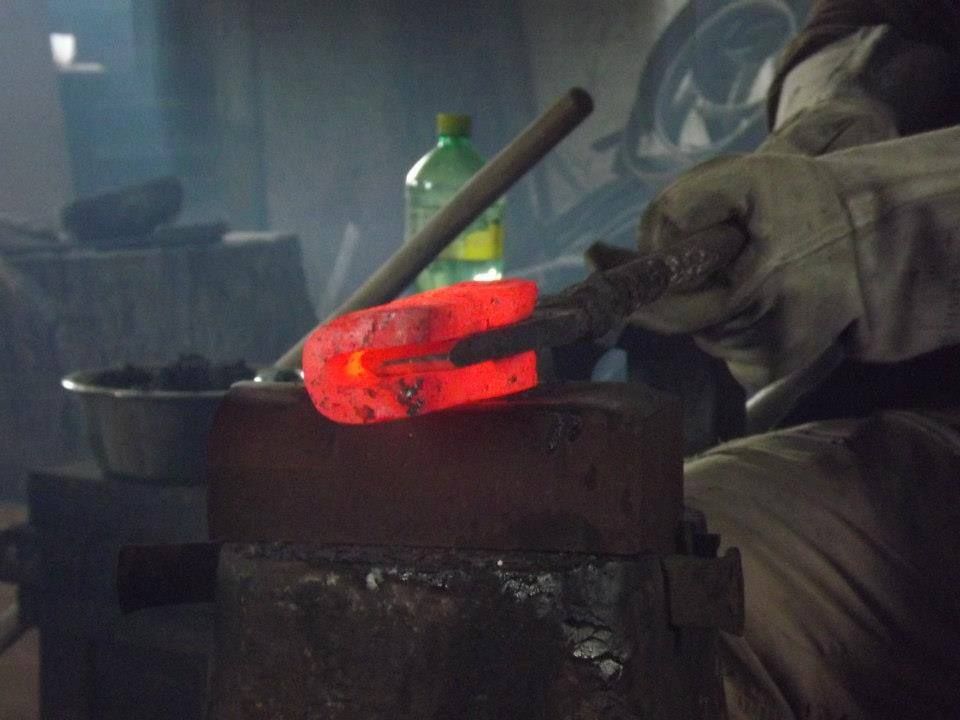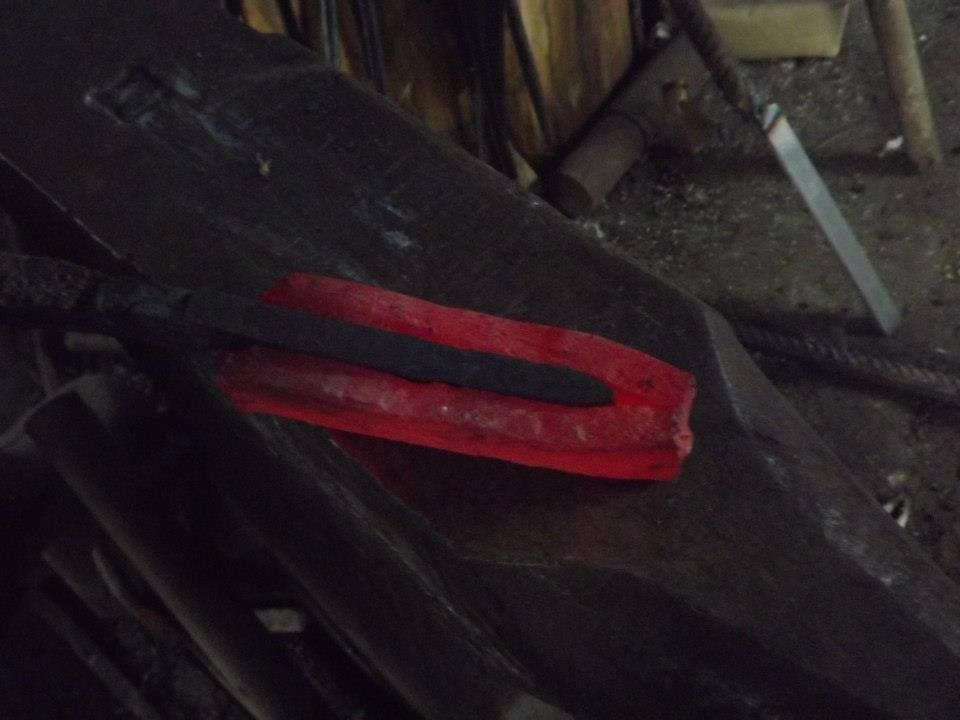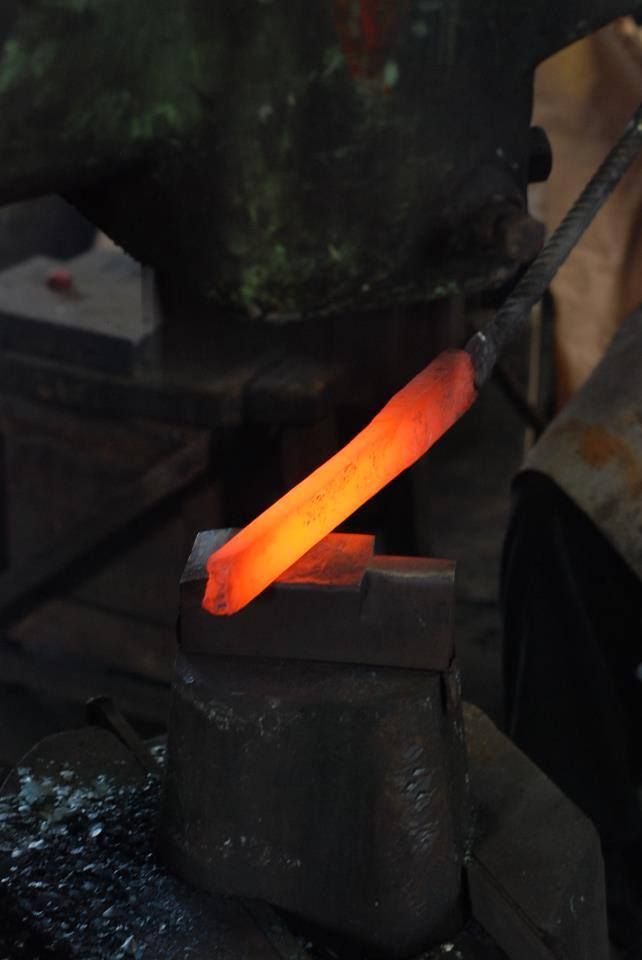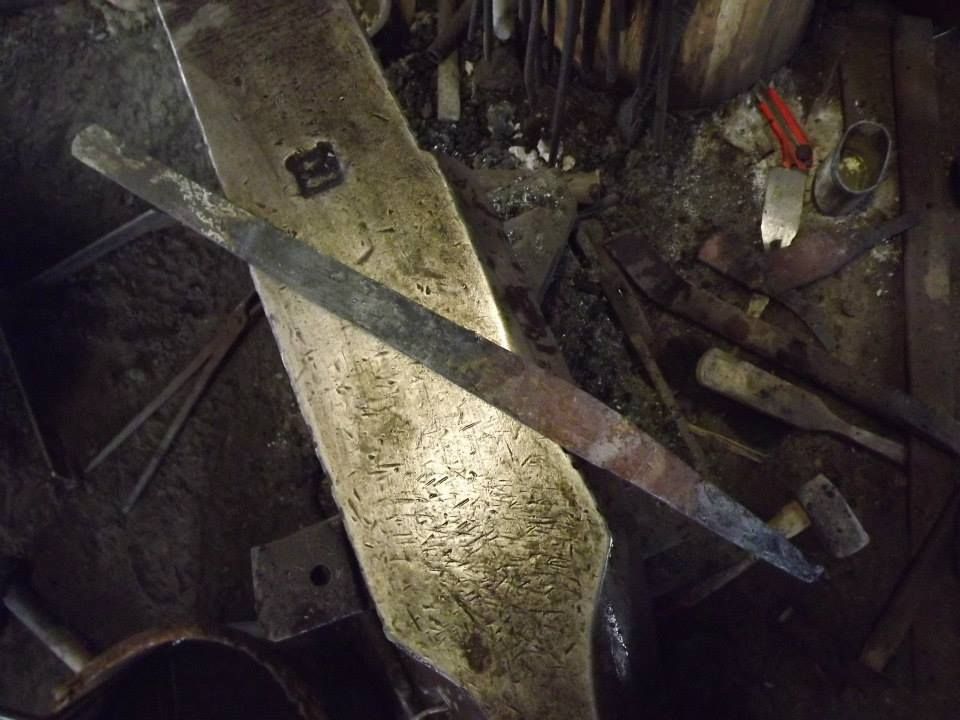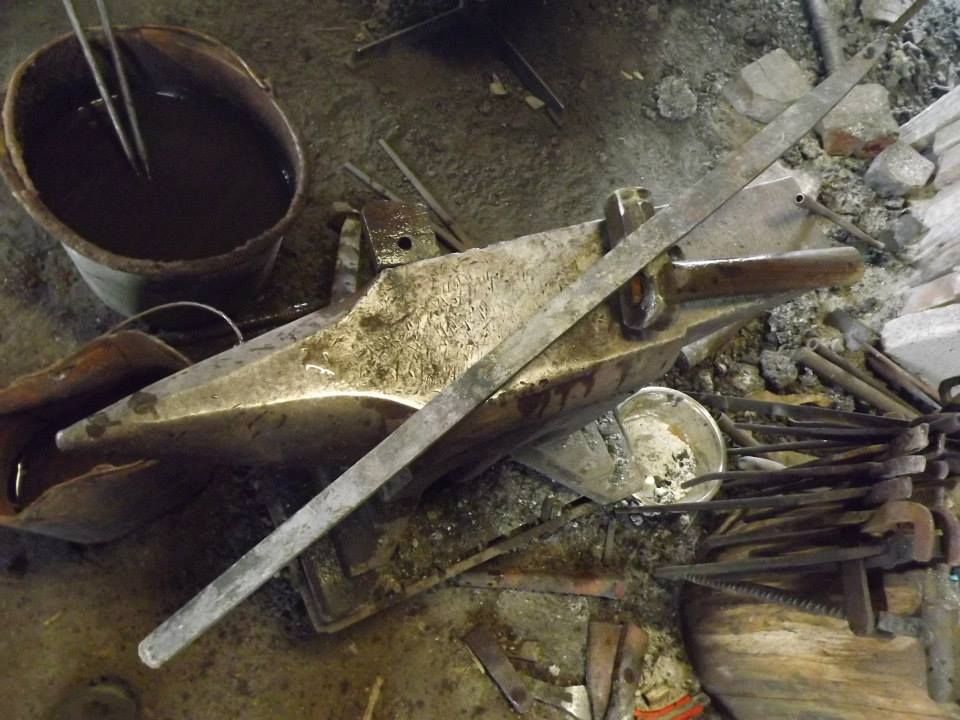Steel for swords made by traditional technology
Pavel Bolf
Due to the fact that TAMAHAGANE iron sands steel produced in Japan is almost unavailable, I usually melt my own steel for blades made with traditional technology. I produce OROSHIGANE steel, which is made by remelting old welding steel. Sometimes I also use TAMAHAGANE of lower quality. The melting is done either in the TATARA furnace or directly in the furnace. I use good quality charcoal as fuel. During the melting process, the individual steel segments inserted into the furnace are melted, carburized and joined into a single unit. The final product of the melting process is a relatively compact steel sponge with a weight of approx. 5-7 kg and a carbon content of approx. 1.2-1.5%. The carbon content is not completely uniform. In addition, the steel contains bubbles, impurities in the form of slag and charcoal pieces. The sponge must therefore be recoated and homogenised and cleaned by repeated forging. The number of foldings varies between 8-15, depending on the desired result. The processed steel is used to produce the blade blank. Steels with different carbon content are used to increase the strength and durability of the blade. The design and ratios of carbon and low carbon steel vary according to the design chosen. I usually use the MARU construction without a core, Kobuse with a soft core or SAN MAI composed of four parts. Sometimes other, more complex designs, especially if I am making a replica of a particular school that uses a particular steel composition design.
Translated with www.DeepL.com
